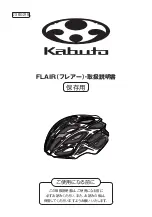
Model S4000CH
27
NOTE:
The test gas concentration must be at least 10% full-scale before the unit will
complete the gas check sequence. If the S4000CH is placed in the Gas Check
Mode and no gas is applied for six minutes, the unit will revert to a Fault (F9)
condition. Re-applying the magnet over the GM logo will return the unit to normal
operation. If the ARGC mode is enabled, and the S4000CH is placed in the Gas
Check mode and no gas is applied for 1 ½ minutes, the unit will revert to a fault
(F12) condition. Re-applying the magnet over the GM logo will return the unit to
normal operation.
3.14 Calibration
General Monitors recommends that the S4000CH Intelligent Sensor be calibrated one hour
after start-up, and that the calibration be checked at least every ninety (90) days to ensure
system integrity. Frequent calibration checks ensure the integrity of the life protecting
equipment.
The above statement is not intended to discourage the customer from checking calibration
more frequently. Frequent calibration checks are recommended for environments that have
problems, such as mud collecting on the sensor head, sensors accidentally being painted
over, etc.
General Monitors recommends that a calibration schedule be established and followed. A
logbook should also be kept, showing calibration dates and dates of sensor replacement.
3.14.1 Calibration Procedure
There are three methods for calibrating the S4000CH: Manually, with an RGC, or with an
ARGC.
NOTE:
If the RGC or ARGC is not installed, the S4000CH calibration is identical to the
S4000C.
NOTE:
If the Catalytic bead sensor is fitted with a splash guard, calibration must be
performed with the splash guard in place.
WARNING:
General Monitors recommends calibrating the S4000CH with 50% LEL of the
gas being detected. This provides the most accurate calibration, since the
S4000CH is optimized for this concentration. The accuracy of the calibration
may be reduced by using a different calibration level, and this inaccuracy will
increase as the calibration level varies from 50% LEL.
If it is suspected that gases are present, it will be necessary to purge the sensor
environment with zero air. If zero air is not available, cover the sensor for about thirty
seconds before applying the calibration gas. Zero air is air that is hydrocarbon free.
Entering Calibration Mode disables the alarm circuits by sending a 1.5 mA output signal
and disabling the Warn and Alarm relays, if present. This will also prevent activation of the
remote relay contacts when using a General Monitors Readout/Relay Display Module with
the S4000CH.
To enter Calibration Mode, place the magnet over the GM logo on the cover of the unit
(Figure 7) and hold it there until “
AC
” (Figure 21) appears on the display (about ten
seconds). The display will flash the remaining sensor life (Section 3.14.4) for about ten
















































